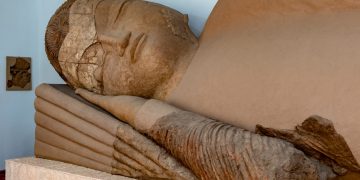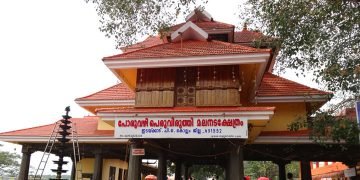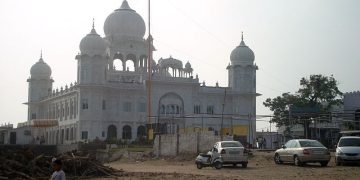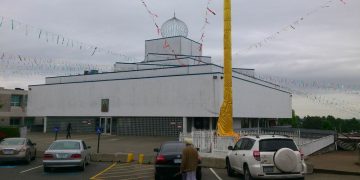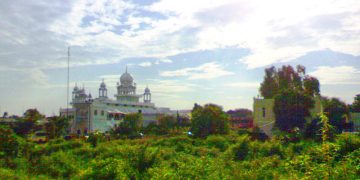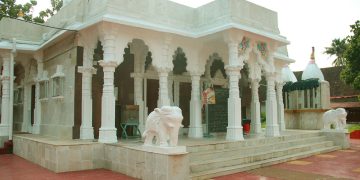Thiksay Gompa or Thiksay Monastery is a gompa affiliated with the Gelug sect of Tibetan Buddhism. It is located on top of a hill in Thiksey village, approximately 19 kilometres east of Leh in Ladakh, India. It is noted for its resemblance to the Potala Palace in Lhasa, Tibet and is the largest gompa in central Ladakh, notably containing a separate set of buildings for female renunciates that has been the source of significant recent building and reorganisation
Shrine’s History
In the early 15th century, Je Tsongkhapa, the founder of the Gelug School – often called “the Yellow Hats” – sent six of his disciples to remote regions of Tibet to spread the teachings of the new school. Tsongkhapa gave one of his disciples, Jangsem Sherab Zangpo , a small statue of Amitayus, containing bone powder and a drop of Tsongkhapa’s own blood. Tsongkhapa directed him to meet the King of Ladakh with a message seeking his help in the propagation of Buddhism. The King, who was then staying in the Nubra Valley near Shey, loved the gift of the statue. After this meeting, the King directed his minister to help Sherab Zangpo to establish a monastery of the Gelug order in Ladakh. As a result, in 1433, Zangpo founded a small village monastery called Lhakhang Serpo “Yellow Temple” in Stagmo, north of the Indus. In spite of his efforts, the lamas who embraced the Gelug order were initially few, although some of his disciples became eminent figures over the years. In the mid 15th century, Palden Zangpo continued the monastic work started by his teacher, Sherab Zangpo. He decided to build a larger monastery here that was dictated by an unusual event that occurred while choosing a site. Legends narrate that Tsongkhapa had predicted that his doctrine would prosper on the right bank of the Indus River. This prediction came true when the Thiksey Monastery was established.
This was followed by others such as the Spituk and Likir Monasteries, which are also situated on the right bank of the Indus. According to legend, Sherab Zangpo and Palden Zangpo were performing some sacred rituals near the Yellow Temple. The torma offerings were then taken to a rock outcrop to be thrown down to the valley. As they were about to throw the torma into the valley, two crows appeared suddenly from somewhere and carried away the ceremonial plate with the offering of torma. They then placed the torma at a location on the other side of the hill. When Palden Zangpo and his disciples began looking for the torma, they reached Thiksey, where they found that the crow had placed the torma on a stone in perfect order and in an undisturbed condition. Palden took this finding as a divine directive to build the monastery here. The new Thiksey monastery was located a few kilometres away from Stagmo, on a sacred hill above a village of the same name.
The monastery is believed to have been built on the site of an earlier Kadam establishment or as a daughter house of the small chapel of Stagmo about 7 kilometres to the north. Rinchen Zangpo is also known to have built a temple named Lakhang Nyerma at Thiksey dedicated to the protector Dorje Chenmo. Today, all that can be seen are some ruins. Thiksey grew in prominence in Ladakh, second only to Hemis Monastery, administering ten other monasteries in the region, such as the Diskit, Spituk, Likir and Stok. The monastery came to own or control 1,327 acres of land and some 25 villages became attached to the monastery. In around 1770, the lama of Hanle Monastery dictated that his elder son should inherit the throne of Ladakh while other princes should be lamas at Thikse and Spituk. As a result, princes such as Jigsmet Namgyal served as lamas at Thikse


Architectural Relevance of This Shrine
Thikse Monastery is the largest such structure in central Ladakh. Located on a hill slope, its building is arranged in an ascending order of importance and are well spaced, from the foot of the hill housing the dwelling units to the top of the hill enshrining the monasteries and potang of the chief lama. The architecture of the monastery strongly resembles the Potala Palace in Lhasa, Tibet, the former official seat of the Dalai Lamas. Thus, Thikse Monastery is also known as ‘Mini Potala’. The motorable approach roadfrom the valley passes through the east side of the Thikse Monastery’s main building. There is the statue of the Tibetan protective deity on this path at the entrance at the lower level. The highest level of the complex has a stupa. The monastery precinct at the foot of the hill has a courtyard from where a flight of steps leads to the main monastery, which is 12-stories in height. It has two main chambers. The monastery is painted in red, ochre and white and houses 60 lamas. It has an attached nunnery. Like Likir and Rangdum monasteries, it was built as a fort-monastery in the Central Tibetan pattern. There are excellent views across the Indus Valley flood plain both east and westbound from it, from which the gompa at Matho, the royal palace at Stok and the former royal palace at Shey are clearly visible.
Maitreya Temple
One of the main points of interest is the Maitreya Temple erected to commemorate the visit of the 14th Dalai Lama to this monastery in 1970. It contains a 15 metres high statue of Maitreya Buddha, the largest such statue in Ladakh, covering two storeys of the building. He is unusually portrayed as seated in the lotus position rather than his usual representations as standing or in a sitting posture on a high throne. It is the largest Buddha statue in the monastery and took four years to build. It was made by the local artists under the master Nawang Tsering of the Central Institute of Buddhist Studies (Leh) – in clay, gold paint.
Shrine’s Map Location and How to Go There
By Road
Ladakh has located 434 km from Srinagar and 494 km from Manali. You can hire a cab or a jeep or board a JKSRTC bus to reach Ladakh. Alternatively, you can embark on a bike trip to Leh from Srinagar, Manali or Chandigarh depending upon the time you have. The highways are shut due to heavy snowfalls during the winter months. So, you can only travel to Ladakh by road between May to September.
By Rail
The nearest railway station is Jammu Tawi (700 km from Ladakh) which is well connected with Delhi, Kolkata and Mumbai. You can hire a cab or board a JKSRTC bus to reach Ladakh from there.
By Air
There is one airport in Leh, from which there are daily flights to Delhi and weekly flights to Srinagar and Jammu
Events Celebrated at This Shrine
The annual festival held in the monastery precincts is known as the Gustor ritual, which is held from the 17th to 19th day of the ninth month of the Tibetan calendar. Sacred dances such as the mask dance or Cham Dance are performed as a part of this ritual. Another special feature is the trade fair held at the base of the monastery, in which villagers from all over Ladakh assemble to barter and trade items and socialise. Sand mandalas are made for smaller festivals. The morning prayers at 7 am, with synchronised chanting of the Buddhist sūtras at this monastery, attract many worshippers to observe the services



